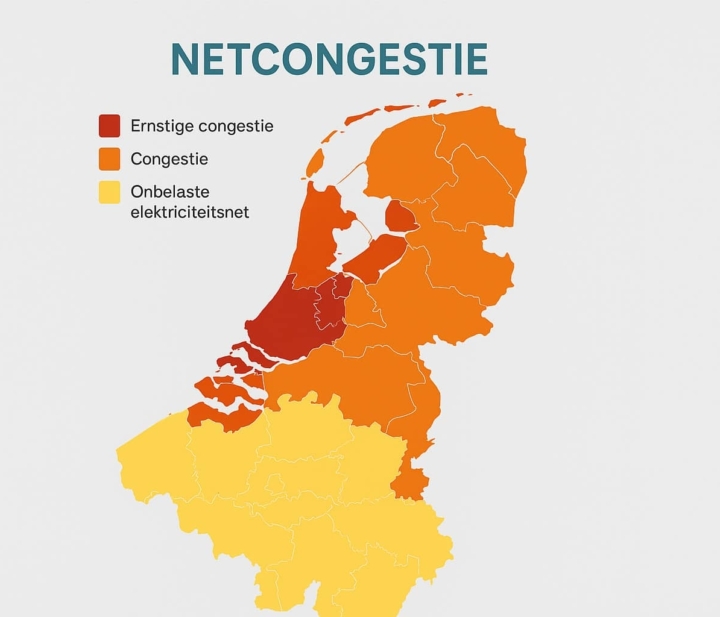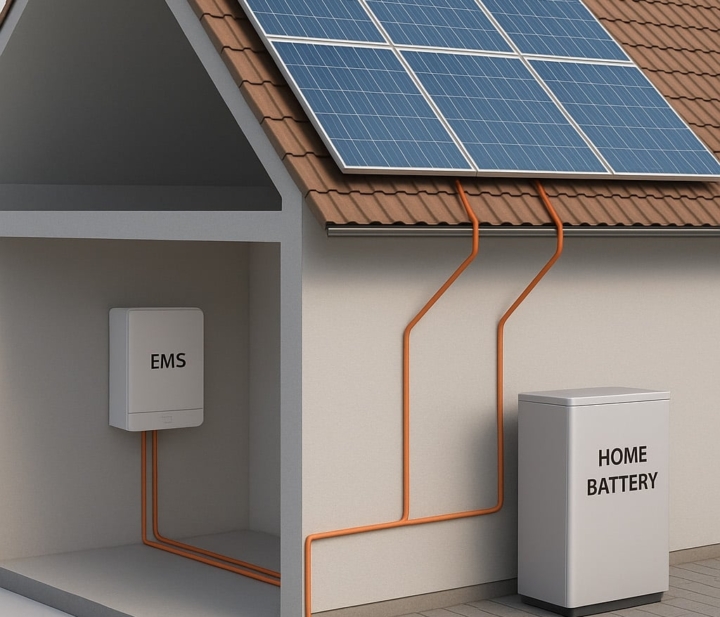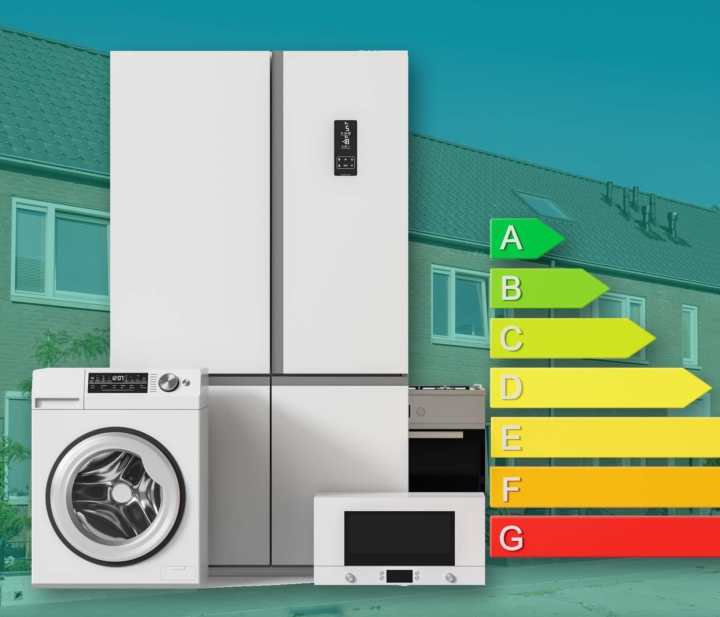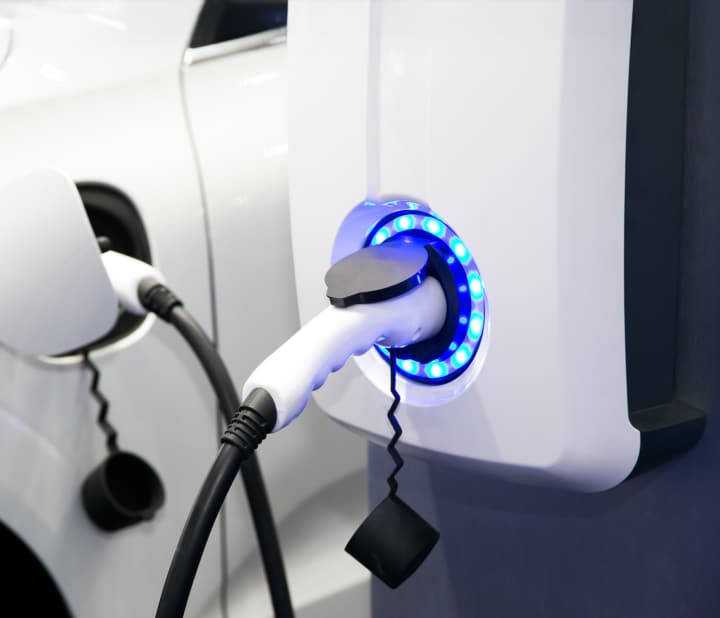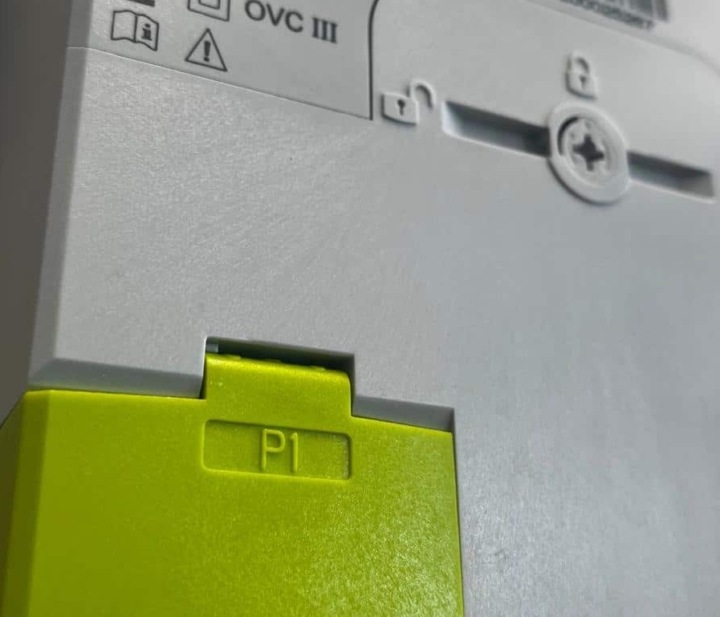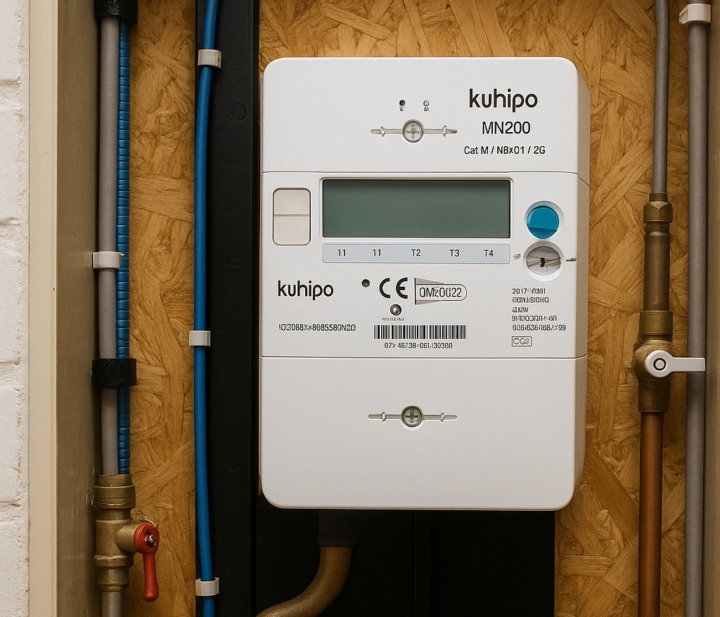Efficient power management with Dynamic Load Balancing
How do you prevent overloading and charge smartly? With load balancing, you automatically distribute energy loads at home or at work. No peaks, no stress. In this guide, you will discover all about load balancing, how it works at charge posts, in the meter box, via software and whether it is smart with 3-phase systems.
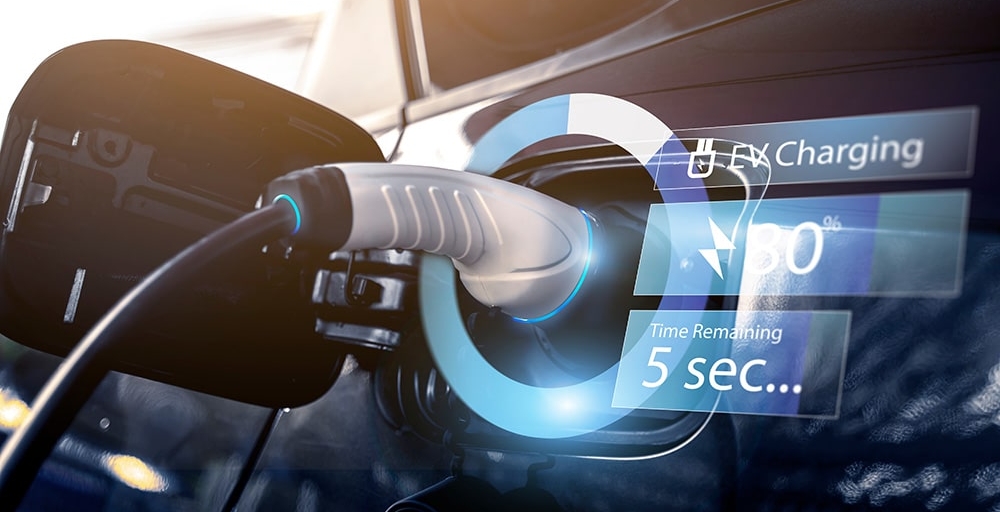
What is Dynamic Load Balancing?
Dynamic Load Balancing (DLB) is a smart technology that automatically regulates and distributes power consumption in real time across all active electrical appliances in a home or business. This ensures that you never consume more power than your grid connection can handle and the connection capacity does not need to be increased. Electrification in your home and business has made it an essential functionality of a modern energy management system (EMS), especially when combined with increasingly popular applications such as solar panels, home batteries, electric vehicles (EVs) and heat pumps.
Imagine: you use your induction hob at night, the heat pump is running at full capacity, the lights are on and your electric car is charged via the charging station. Without dynamic load balancing, there is a chance that the main switch in your meter box will trip due to overloading. Thanks to load balancing, the available energy is dynamically distributed among your devices. The charging speed of your EV is temporarily reduced, so you can continue to cook and heat safely without interruptions.
What is load balancing on a charging station?
A charge post with dynamic load balancing automatically takes into account the total energy consumption in your home or business premises. A controller measures how much power is consumed via the smart meter (often the P1 port) and adjusts the charging speed of your electric vehicle accordingly. This prevents your grid connection from becoming overloaded.
Example:
You have a single-phase connection of 35A (8.05 kW), you run the washing machine, dishwasher AND want to charge your car. A charge post without dynamic load balancing would try to use the maximum charging power, risking tripping the main switch. A charge post with dynamic load balancing temporarily reduces the car’s charging current to, say, 6A, so that everything continues to function at the same time.
Why is dynamic load balancing important?
Dynamic load balancing offers several advantages, both technical and financial. It is not only smart for optimal home energy management, but in many cases essential for those who want to live or work sustainably and future-proof.
Key benefits of load balancing:
- Prevents overloading, of the electrical system and prevents the failure of groups or main fuses.
- Saves costs, as you can make optimal use of your solar energy and often do not have to request a heavier grid connection from your grid operator.
- Increases efficiency, energy is dynamically distributed where it is most needed and only when there is sufficient capacity.
- Enables simultaneous charging of several cars without peak load.
- Convenient and automatic, with no manual intervention required.
Applications of load balancing
Dynamic load balancing is applied in various contexts. Here are some concrete examples:
- Energy management in homes or business premises
- Dynamic load balancing helps combine multiple large consumers such as electric water heaters, air conditioners, charging stations and heat pumps
- Often integrated into an EMS (Energy Management System) that controls everything automatically.
- Charge posts at home or at work
- In homes with a single-phase connection, dynamic load balancing is crucial for charging without overloading your home.
- In businesses with multiple charging points, it ensures a balanced distribution of available connection power across all vehicles.
- Data centres and network management
- In IT infrastructures, load balancing is used to distribute data traffic across multiple servers. This ensures optimal availability of services, less downtime and faster data processing.
- Solar panels and self-consumption
- Combined with solar power and a home battery, dynamic load balancing balances energy demand and solar supply for flexible management and maximum self-consumption.
- Electrical appliances can simultaneously receive power from both solar panels and the grid. Dynamic load balancing can ensure that the main and neutral wires are not overloaded by the total current.
Dynamic Load Balancing in the meter box via the P1 port
The P1 port on your smart meter can be used for efficient energy management in your home. By connecting this port to a controller or Energy Management System (EMS), you can monitor and optimise energy consumption in real time thanks to dynamic load balancing. This prevents overloading your grid and ensures more efficient use of energy sources such as solar panels, home batteries heat pumps and all electric vehicle charging stations.
🔌 What is the P1 port?
The P1 port is a serial data port on your smart meter that continuously collects and transmits data about your energy consumption. This port enables real-time insight into your power consumption or feed-in to the grid, which is essential for applying dynamic load balancing. As a result, you do not need a separate metering unit which is cost-saving.
⚙️ How does dynamic load balancing via the P1 port work?
In practice, dynamic load balancing works as follows.
- Smart meter reads consumption: The smart meter continuously collects data about your energy consumption and makes it available via the P1 port.
- Data analysis: A controller or Energy Management System receives this data and analyses it to determine how much energy is available…
- Smart distribution: Based on the available capacity, load balancing dynamically distributes the energy to different devices, such as your electric car, heat pump and household appliances.
- Automatic adjustment: If necessary, dynamic load balancing adjusts the energy consumption of certain devices to prevent overloading
💡 Practical example
Imagine: you have installed solar panels and an electric car. On a sunny day, you produce more energy than you consume and the smart meter registers that the surplus is delivered back to the public grid. Via the P1 port of your smart meter, this metering data is used by the dynamic load balancing controller or Energy Management System to automatically use the surplus solar energy to charge your car. This maximises your self-consumption and reduces your energy costs.
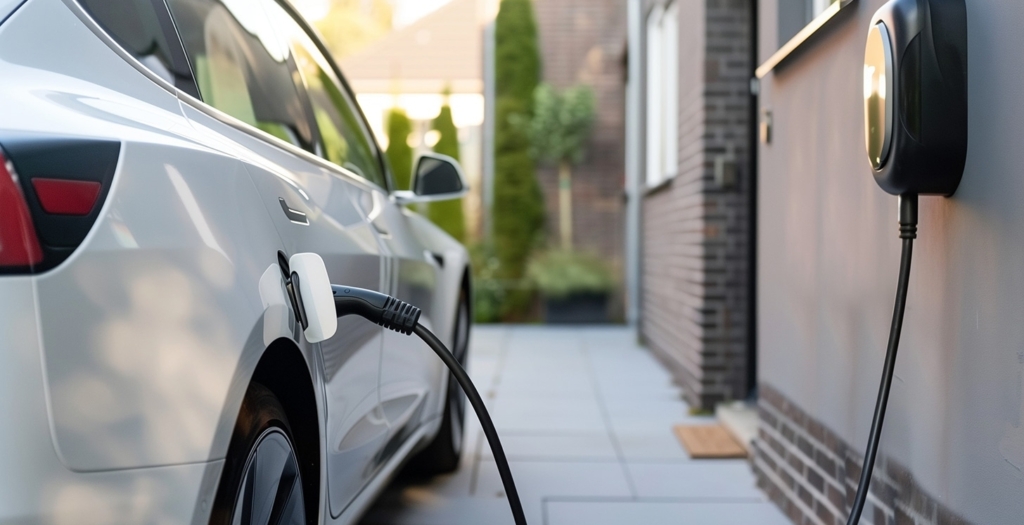
Software for load balancing
Successful load balancing starts with smart metering and smart control. Intelligent dynamic load balancing software in the controller forms the backbone for optimal power distribution. It not only provides real-time insight into your power consumption, but also ensures continuous optimisation of energy consumption and grid load.
What does load balancing monitoring software do?
The load balancing monitoring software continuously monitors the total energy flow of your network and that of connected devices. The software analyses this data and – if necessary – makes immediate adjustments. This makes the application dynamic and proactive.
Imagine: you are working at home on a hot summer day. Your air conditioner is running, your car is charging, the electric boiler is heating up and your washing machine is on. The dynamic load balancing software recognises that the load is getting too high and temporarily lowers the charging capacity of your car or the power to the electric boiler, so that your air conditioner and other essential appliances keep running – without tripping system circuit breakers or incurring extra costs due to peak consumption.
Why is monitoring important in load balancing?
Dynamic load balancing without monitoring is like driving without a dashboard. You don’t know how much you are consuming, whether peaks are coming, or where you can optimise. Monitoring provides the insights needed to:
- Prevent power outages: peaks are recognised and managed in time.
- Reduce costs: by smartly charging or heating and adjusting consumption based on real-time data.
- Live energy-efficiently: all appliances work optimally without manual intervention.
- Keep a grip on your consumption: via apps or dashboards, you see what you consume where and when.
Examples of loadbalance monitoring in practice
Scenario 1: Solar home charging
You have solar panels on your roof and an electric car. Via monitoring, you see when there is a lot of solar production. The controller automatically starts charging your car at those times, so you get maximum benefit from your own energy. You don’t have to do anything manually.
Scenario 2: Corporate multi-car charging plaza
A company has a charging plaza with 6 charging points. Thanks to dynamic load balancing, the available power is distributed among the charging cars depending on priority, grid capacity and time. When the peak hours are over, the charging capacity is increased again. This prevents peak penalties and saves costs.
Scenario 3: Notifications in real time
A resident receives a message via the monitoring app: ‘High consumption detected, load capacity car temporarily reduced’. Thanks to this automatic adjustment, a power outage is prevented.
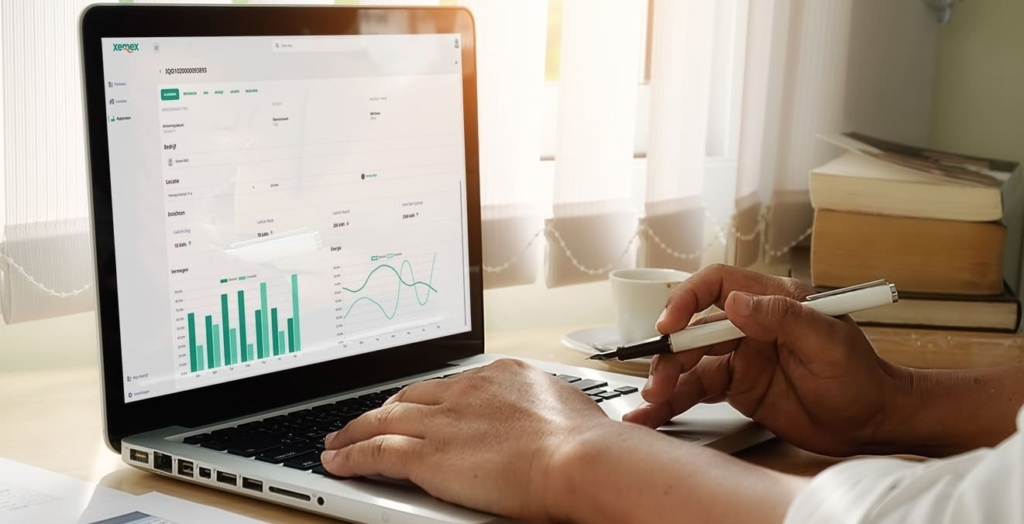
Dynamic Load balancing bij 3-fase systemen: wel of niet doen?
Heb je een 3-fase netaansluiting in huis of in je bedrijfspand? Dan is het toepassen van dynamic load balancing een slimme zet om je energiegebruik veiliger, efficiënter en toekomstbestendig te maken. Zeker wanneer je meerdere zware verbruikers hebt – zoals een elektrische laadpaal, inductiekookplaat, warmtepomp of industriële machines – is dynamic load balancing bij een 3-fase aansluiting essentieel.
Wat is 3-fase load balancing?
Bij een 3-fase stroomaansluiting wordt het aangesloten vermogen verdeeld over drie afzonderlijke stroomlijnen (fasen). Bij zware 3-fasige apparaten wordt het vermogen verdeeld over de drie fasen zonder dat één enkele fase overbelast raakt. Wanneer andere (zware) apparaten ook op één van deze fasen zijn aangesloten, kan deze overbelast raken. Dynamic load balancing zorgt ervoor dat het beschikbare vermogen slim en evenwichtig wordt geregeld en verdeeld over de drie fasen.
In technische termen betekent een 3-fase aansluiting:
- Naast drie keer 230V netspanning is ook drie keer 400V beschikbaar voor de grotere vermogens.
- Elk van de drie fasen levert spanning, wat leidt tot een hogere totale capaciteit.
- De dynamic load balancing detecteert in realtime of één van de fasen zwaarder wordt belast en pas vervolgens het vermogen van het aangesloten apparaat aan
Waarom is dynamic load balancing bij 3-fase belangrijk?
Zonder dynamic load balancing kan het voorkomen dat één van de drie fasen structureel zwaarder belast wordt dan de andere. Dit leidt tot:
- Overbelasting van zekeringen
- Onevenwichtige netbelasting, wat kan leiden tot spanningsproblemen
- Inefficiënt energiegebruik, waardoor je meer betaalt
Een goed ingesteld 3-fase dynamic load balancing voorkomt dit door:
- Het stroomverbruik gelijkmatig te verdelen over de drie fasen.
- De belasting automatisch aan te passen op basis van de actuele verbruikssituatie.
- Apparaten met hoge piekvermogens – zoals laadpalen – intelligent aan te sturen, zodat je netaansluiting niet overbelast wordt.
Voorbeelden uit de praktijk
🔌 Scenario 1: Zakelijk laadplein met 3-fase aansluiting
Een bedrijf heeft zes laadpalen aangesloten op een 3-fase installatie. Dankzij de load balancing controller worden de laadstromen dynamisch verdeeld, zodat elke auto zo snel mogelijk laadt zonder het totaalvermogen te overschrijden. De controller voorkomt dat één van de drie fasen overbelast raakt, wat anders tot uitval of dure netverzwaring zou leiden.
🏠 Scenario 2: Villa met warmtepomp en EV
Een particulier heeft thuis een 3-fase aansluiting, omdat hij een warmtepomp, inductiekookplaat en een laadpaal gebruikt. Zonder dynamic load balancing zou het inschakelen van de warmtepomp en het laden van de auto tegelijk kunnen zorgen voor een overbelasting van een van de fasen. Met dynamic load balancing wordt het laadvermogen van de EV tijdelijk verlaagd als de warmtepomp actief is – alles verloopt automatisch en zonder tussenkomst.
🏢 Scenario 3: Productiehal met machines
In een productieomgeving waar meerdere machines draaien op 3-fase stroom, kan loadbalance software voorkomen dat opstartstromen leiden tot piekbelasting. De software plant het energieverbruik en verdeelt het slim over de dag.
Voordelen van 3-fase load balancing
✅ Stabiele stroomtoevoer voor zware apparaten
Je voorkomt spanningsval of storingen bij apparaten zoals warmtepompen, airco’s of laadsystemen
✅ Veiliger energiegebruik
Geen overbelasting van één fase betekent minder risico op uitval of schade.
✅ Efficiënt gebruik van bestaande netcapaciteit
Je benut je aansluiting optimaal zonder dat je moet investeren in een zwaardere netaansluiting.
✅ Flexibel schaalbaar systeem
Ideaal bij groei – bijvoorbeeld als je later extra laadpunten, zonnepanelen of batterijen toevoegt.
Uitdagingen en aandachtspunten
❗ Technische complexiteit
3-fase dynamic load balancing controller vereist geavanceerdere software die met fasemeting werkt. Denk hierbij aan systemen zoals Xemex ENNY-EMS, die realtime apparaat sturing over alle fasen mogelijk maken.
❗ Afstemming met netbeheerder
In sommige situaties moet je met je netbeheerder overleggen bij grote vermogens, of als je verbruiksprofiel verandert door bijvoorbeeld uitbreiding van laadpleinen of zonnepanelen.
❗ Kosten
De installatie van een 3-fase dynamic load balancing toepassing kan duurder zijn dan bij 1-fase. Daar staat tegenover dat je energiekosten en netbeheerboetes bespaart – op de lange termijn een winstgevende investering.
Wanneer is 3-fase load balancing slim?
✔️ JA, als je beschikt over:
- Meerdere laadpunten of een publieke laadopstelling
- Zware elektrische verbruikers (EV’s, warmtepomp, sauna, airco’s)
- Een bedrijfspand, villa of appartementencomplex met gedeelde infrastructuur
- Zonnepanelen met teruglevering + batterijopslag
❌ MINDER NODIG, als je:
- Een klein huishouden hebt zonder elektrische auto of warmtepomp
- Alleen lichte huishoudelijke apparaten gebruikt
- Geen plannen hebt om elektrisch te gaan rijden of te verduurzamen
Thuis je auto slim opladen met Load Balancing
Wil je thuis veilig, efficiënt én voordelig je elektrische auto opladen? Dan is het slim om gebruik te maken van dynamic load balancing. Slim laden – ook wel smart charging genoemd – voorkomt overbelasting van je stroomnet, verlaagt je energiekosten en zorgt ervoor dat je auto oplaadt op het juiste moment met het juiste vermogen.
Hoe werkt dynamic load balancing bij thuisladen?
Bij thuisladen bepaalt een dynamic load balancing controller hoeveel stroom er beschikbaar is in jouw woning. Die informatie wordt in realtime opgehaald via je slimme meter (vaak via de P1-poort) of een energiemeter, en doorgestuurd naar de laadpaal. Vervolgens past de laadpaal automatisch het laadvermogen van je elektrische auto aan.
Gebruik je op dat moment veel andere apparaten, zoals een oven, wasmachine of inductiekookplaat? Dan verlaagt dynamic load balancing tijdelijk het laadvermogen om overbelasting van je stroomgroep te voorkomen. Zodra de andere apparaten stoppen of minder verbruiken, wordt de laadsnelheid automatisch weer opgeregeld. Dit gebeurt volledig automatisch – je hoeft niets handmatig aan te passen.
Voorbeeld uit de praktijk
🔋 Scenario: Slim laden tijdens piekverbruik in huis
Je komt thuis van je werk en sluit je elektrische auto aan op de laadpaal. Ondertussen draait je vaatwasser, de warmtepomp verwarmt het huis en je kinderen gebruiken de oven en televisie. Door de dynamic load balancing controller ziet de laadpaal dat er weinig capaciteit over is. In plaats van maximaal te laden, verlaagt hij tijdelijk het vermogen tot bijvoorbeeld 6A. Zodra andere apparaten klaar zijn, verhoogt het systeem het laadvermogen automatisch naar 16A of zelfs 32A (bij 3-fase).
Hoe werkt een slimme laadpaal met dynamic load balancing?
Een slimme laadpaal is uitgerust met sensoren en software die communiceren met je slimme meter. Deze slimme laadpaal meet het totale verbruik in je woning en past de laadstroom van je elektrische auto dynamisch aan. Wanneer er veel stroom wordt verbruikt door andere apparaten, vermindert de laadpaal tijdelijk de laadsnelheid van de auto. Als er minder stroom wordt verbruikt, kan de laadpaal de laadsnelheid verhogen. Dit proces wordt continu gemonitord om een stabiele en veilige stroomvoorziening te garanderen.
Welke laadinfrastructuur is geschikt?
Voor de meeste huishoudens met een standaard netaansluiting (1-fase, 230V) is een 1-fase laadpaal met load balancing een ideale keuze. Dit type laadpunt:
- Laadt slim op basis van beschikbare stroom
- Voorkomt storingen of het uitvallen van je installatieautomaten
- Werkt samen met je slimme meter en/of zonnepanelen
Heb je een zwaardere aansluiting (3-fase, 400V)? Dan kun je kiezen voor een snellere laadpaal van 11 of 22 kW, die gebruikmaakt van 3-fase dynamic load balancing (zie onze sectie over 3-fase systemen).
Voordelen van loadbalance thuis
✅ Lagere energierekeningDoor je auto slim te laden wanneer er stroom beschikbaar is (bijv. tijdens daluren of bij zonnige momenten met eigen PV-opwek), bespaar je op je verbruikskosten.
✅ Geen overbelasting van je stroomnet
Dynamic load balancing voorkomt dat je woninginstallatie overbelast raakt. Zo hoef je geen zwaardere aansluiting aan te vragen of zekeringen te vervangen.
✅ Snel laden als het kan, langzaam als het moet
Je auto wordt zo snel mogelijk opgeladen, zonder risico’s. Alles gebeurt automatisch op basis van jouw verbruik
✅ Toekomstbestendig systeem
Koppel je laadpaal aan je slimme meter, zonnepanelen, batterijopslag of een thuis-EMS (Energy Management System) voor een geïntegreerd energiesysteem.
Integratie met je slimme thuisnetwerk
Met een smart home-integratie wordt dynamic load balancing echt krachtig. Je kunt je laadstation verbinden met:
- 🏠 Slimme meter (P1-poort) – voor real-time inzicht in je verbruik
- ☀️ Zonnepanelen – laad bij voorkeur op eigen zonnestroom
- 🔋 Thuisbatterij – optimaliseer laden en ontladen
- 📱 Energie-app of dashboard – zie live wat je verbruikt en bespaart
Gebruik je bijvoorbeeld een Energie Management Systeem als Xemex ENNY, dan krijg je niet alleen inzicht, maar ook automatische sturing op basis van verbruiksdata. Zo laadt je auto optimaal, zonder dat jij iets hoeft te regelen.
Loadbalance voor thuis: wanneer heb je het nodig?
✔️ Wel nodig als je:
- Een elektrische auto hebt of binnenkort krijgt
- Veel apparaten tegelijk gebruikt (zoals warmtepomp, inductie, droger, meerdere laadpalen)
- Zonnepanelen hebt en deze optimaal wilt inzetten
- Geen zwaardere netaansluiting wilt aanvragen
❌ Minder noodzakelijk als je:
- Geen EV hebt (of een plug-in hybride met laag laadvermogen)
- Weinig andere stroomverbruikers tegelijk gebruikt
- Altijd laadt als er verder niets draait
Conclusie: Het Belang van Dynamic Load Balancing in Energiebeheer
Dynamic load balancing is een cruciale toepassing voor het optimaliseren van energieverbruik en het voorkomen van overbelasting in het elektriciteitsnetwerk, of het nu gaat om het opladen van elektrische voertuigen, het efficiënt beheren van energie in woningen en bedrijfspanden, of het onderhouden van een stabiele netwerk- of dataserver-infrastructuur.
Of je nu een slimme laadpaal thuis hebt, je energieverbruik via de P1-poort in de meterkast monitort, of gebruik maakt van 3-fase systemen voor zware apparatuur – dynamic load balancing biedt tal van voordelen:
- Kostenbesparing door efficiënter energieverbruik.
- Voorkomen van overbelasting van je energienet en apparatuur.
- Betere controle over je energieverbruik door slimme sturing en monitoring.
Door deze technologie te integreren met slimme meters, zonnepanelen, thuisbatterijen en alle laadpalen, kun je niet alleen je energieverbruik optimaliseren, maar ook bijdragen aan een duurzamer gebruik van energiebronnen.
Contact opnemen voor persoonlijk advies
Ben je benieuwd hoe dynamic load balancing specifiek in jouw situatie kan bijdragen aan lagere kosten en een efficiënter energieverbruik? Bij Xemex bieden we persoonlijk advies en op maat gemaakte oplossingen voor jouw energiebehoeften, van slimme laadpalen tot uitgebreide energiebeheersystemen.
Always ready to start
Wondering what we can do for your organization? Contact Xemex and discuss your needs with our team. Together we will realize a solution that addresses your energy challenges and opens up new possibilities.
Burgemeester Burgerslaan 40
5245 NH 's-Hertogenbosch, The Netherlands
Metropoolstraat 11a
2900 Schoten; Belgium

